Hole in the Clouds
Mar 15, 2010

The little country store in northern Minnesota that Mom and Pop were keeping in 1937, when photographer Russell Lee happened by for the Farm Security Administration, was once a big and bustling emporium. Back in 1910, it had employed eight clerks, plus a butcher and a bookeeper. But in 1923, the nearby iron mine closed, and the Vermilion Range mining town known as Section 30 quickly became a ghost town, as weather-beaten and empty as Cripple Creek and the other more famous ghost towns out west.
When this photo was taken, the mine had been closed and the town abandoned for fifteen years. The photographer noted that the town of Section 30 was "bust." How, then, are Mom and Pop getting by? The store building is being kept up, the storekeepers are eating somehow. They look cheerful and relaxed, not at all like the haunted, haggard figures in so many Depression-era images.
I don't really know the answer. There were seasonal logging camps in the Section 30 area, but they were probably too isolated to reliably support even a little crossroads store. No new economic activity ever sprang up to replace the old mine; today, there's nothing but woods in that neck of the woods, plus some rusted old mining machinery.
Iron ore was identified in Section 30 back in the 1880s. Two groups of men tried to claim the property and mineral rights, using two different strategies to get title to the land. One group went to the nearest courthouse, in Duluth, and bought the land with "Sioux half-breed scrip"--currency issued to Indians for land transactions with the government; the men had bought the scrip from Indians who had nothing to do with the land. A second group of men filed homesteading claims on the land and built houses there to prove up their claims. The two groups sued one another, and to pay for the lawsuits, they had to bring in extra partners, including an ex-congressman. The competing claims dragged through the courts until 1902, when the Supreme Court ruled in favor of the Indian-scrip group (which included the ex-congressman); the homesteaders' claim was invalidated because homesteaders are not allowed to sign contracts conveying partial ownership of the land until their claims are proven up, even though such contracts had been necessary in order to defend the claims in court.
The mine turned out to be even richer than anticipated; the motherlode was just eight feet below the surface. Active mining began in 1903, and the town of Section 30 filled up overnight. Twenty years later, the boom went bust, yet fifteen years into the bust, here are Mom and Pop making a living and a life, somehow, in Section 30.
Minnesota
Section 30
Vermilion Range
1937
store
(Image credit: Russell Lee, FSA)
Oct 30, 2011
 Friday was the Philadelphia Photo Arts Center's second annual Philly Photo Day. Anyone can submit a digital file for a photo taken anywhere in the city during the twenty-four-hour period of October 28; the Photo Arts Center prints the pictures and offers them for sale at a fund-raising gala. My submission was this snapshot from the checkout line at an ABC store, where Philadelphians were getting ready for the weekend.
Friday was the Philadelphia Photo Arts Center's second annual Philly Photo Day. Anyone can submit a digital file for a photo taken anywhere in the city during the twenty-four-hour period of October 28; the Photo Arts Center prints the pictures and offers them for sale at a fund-raising gala. My submission was this snapshot from the checkout line at an ABC store, where Philadelphians were getting ready for the weekend.
Pennsylvania
cityscape
Philadelphia
store
Dec 20, 2011
 This general store in Fort Covington, New York, a border town about 75 miles southwest of Montreal, was the pride and joy of Elsie and Charles J. Clarke, who are pictured here behind the counter in the mid-1920s. Charles Clarke, who had emigrated to Canada as a boy aboard one of the orphan ships from Liverpool, England, had somehow managed to save up enough money to buy his very own store. A few years later, however, during the devastation of the Great Depression, the Clarkes extended so much credit to their customers and had to conduct so much of their trade by barter that they lost the store.
This general store in Fort Covington, New York, a border town about 75 miles southwest of Montreal, was the pride and joy of Elsie and Charles J. Clarke, who are pictured here behind the counter in the mid-1920s. Charles Clarke, who had emigrated to Canada as a boy aboard one of the orphan ships from Liverpool, England, had somehow managed to save up enough money to buy his very own store. A few years later, however, during the devastation of the Great Depression, the Clarkes extended so much credit to their customers and had to conduct so much of their trade by barter that they lost the store.
New York
store
(h/t: Shorpy)
Elsie and Charles J. Clarke
Fort Covington
1920s
orphan ship
Feb 23, 2012
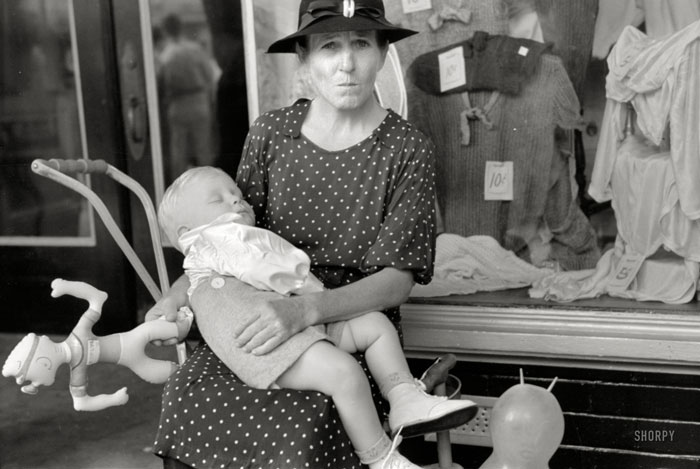 He had a balloon and an inflatable Popeye, but still the 1938 Rice Festival Parade in Crawfordville, Louisiana, just lasted too long.
He had a balloon and an inflatable Popeye, but still the 1938 Rice Festival Parade in Crawfordville, Louisiana, just lasted too long.
Some of the signs in the store window appear to be advertising items of clothing for 10 cents, or even 5 cents. That can't be right, but I have no alternative explanation.
Give that baby some spinach, and he'll come round.
baby
streetscape
Louisiana
store
Crawfordville
1938
(Image credit: Russell Lee, Farm Security Administration, via Shorpy)
Aug 31, 2012
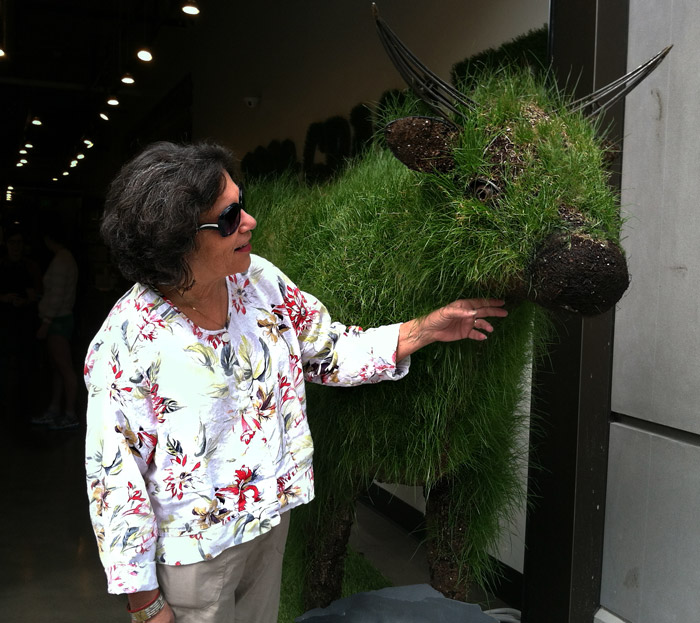 Miss Tina pets the cow at a gourmet frozen-food store in the Capitol Hill neighborhood of Seattle.
Miss Tina pets the cow at a gourmet frozen-food store in the Capitol Hill neighborhood of Seattle.
cow
streetscape
store
Seattle
advertising
Tina Lackeos
Capitol Hill
Dec 2, 2012
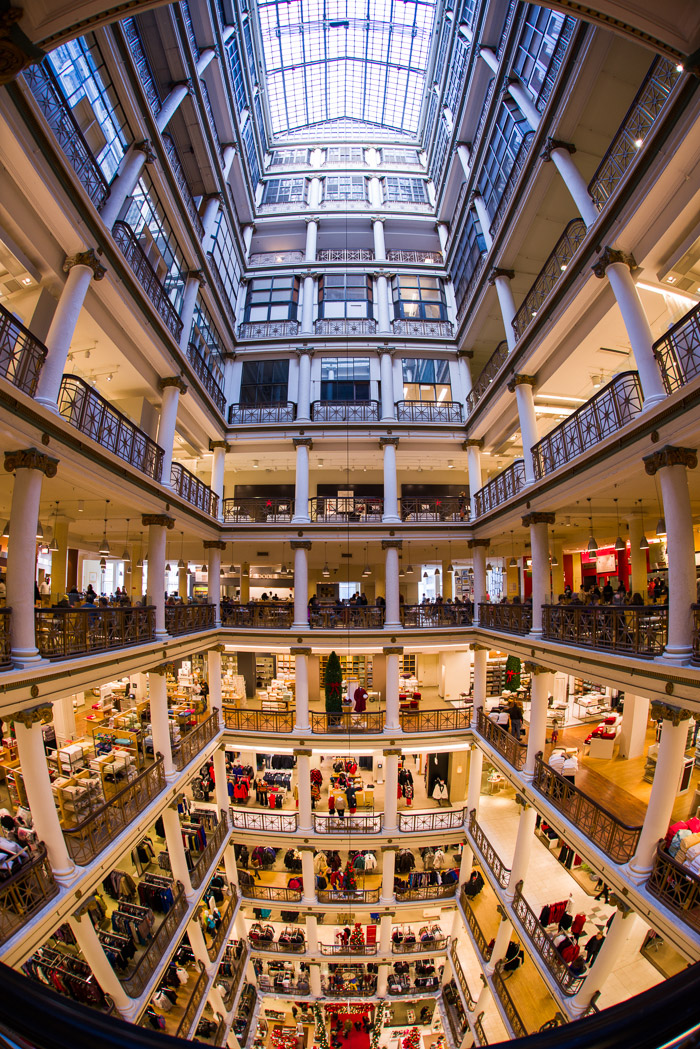 At Macy's in Chicago, upstairs and downstairs, the season is upon us.
At Macy's in Chicago, upstairs and downstairs, the season is upon us.
Chicago
store
Christmas
shopping
Macy's
fisheye
(Image credit: Archie Florcruz)
Mar 10, 2013
 Although George Chaconas advertised "fancy fruits and vegetables" at his grocery store in Washington, D.C., also prominent among his wares are chickens with their feathers and rabbits with their fur.
Although George Chaconas advertised "fancy fruits and vegetables" at his grocery store in Washington, D.C., also prominent among his wares are chickens with their feathers and rabbits with their fur.
Way in the background is the Washington Monument. The store was in the area now swallowed up by the government office buildings of Federal Triangle.
By 1915, when this picture was taken, Chaconas had been in the grocery business for more than a quarter century. In addition to the store, which had been in this location for about a decade, he and his family also sold groceries from a truck–the kind of vehicle referred to then as a huckster wagon–that made the rounds of the outlying neighborhoods.
Back in the 1890s, however, when he was first establishing himself in Washington, Chaconas sold his fruits and vegetables from a pushcart. On August 14, 1894, as recorded by the Washington Post, Chaconas and eleven other Greeks and Italians were arrested and fined for lingering too long and obstructing traffic with their pushcarts.
streetscape
store
P.K.
1915
immigrant
Greek American
chickens
(Image credit: Harris & Ewing via Shorpy)
Jun 22, 2013
 Hats trimmed free of charge, according to the bronze lettering above the 8th Street entrance to the old Lit Brothers Department Store in Philadelphia. The original Lits opened here in 1891 and expanded to about a dozen locations in southeast Pennsylvania and south Jersey before the national chains killed it off in the 1970s. Today, Ross Dress for Less occupies part of the first floor.
Hats trimmed free of charge, according to the bronze lettering above the 8th Street entrance to the old Lit Brothers Department Store in Philadelphia. The original Lits opened here in 1891 and expanded to about a dozen locations in southeast Pennsylvania and south Jersey before the national chains killed it off in the 1970s. Today, Ross Dress for Less occupies part of the first floor.
streetscape
Philadelphia
store
Market Street
Lit Department Store
Nov 13, 2013
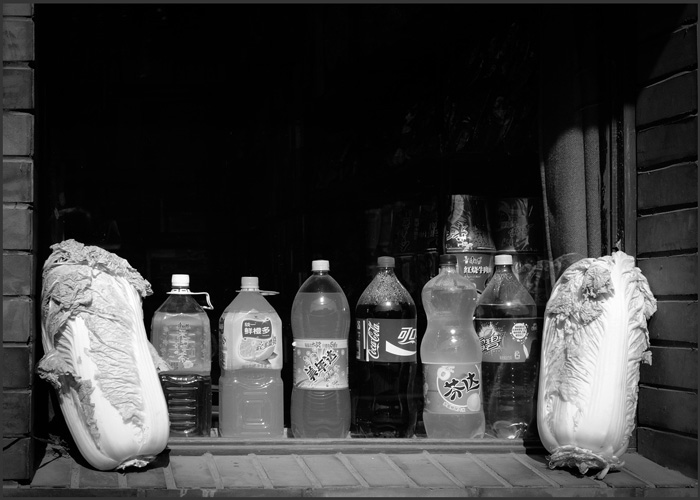
streetscape
store
window
vegetables
soda
Thailand
(Image credit: Pascal Riben)
Sep 8, 2014
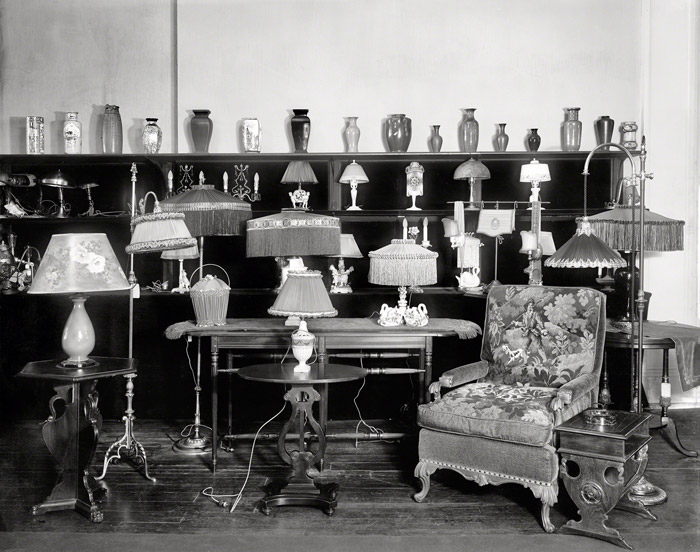 The latest and greatest in electric lights, as seen in 1917 in the Washington, D.C., showroom of Dulin & Martin Co.
The latest and greatest in electric lights, as seen in 1917 in the Washington, D.C., showroom of Dulin & Martin Co.
Note that the business ends of the lamp cords were shaped like the bottoms of light bulbs. Those were the days when houses were wired with sockets for light bulbs but not with wall outlets; to plug in a lamp or a toaster or any other kind of electrical appliance, you'd first have to unscrew a lightbulb from the ceiling.
Washington, D.C.
store
1917
lamps
Dulin & Martin Co.
(Image credit: Harris & Ewing via Shorpy)
Feb 19, 2016
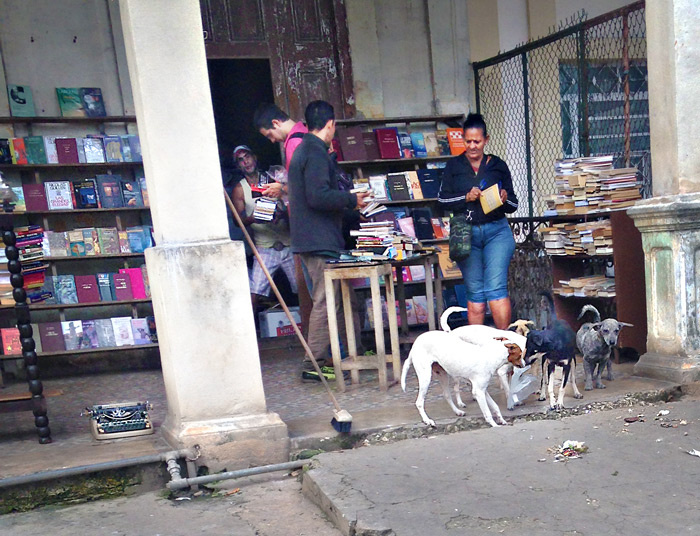 Joe, our man in Havana, is spending the spring semester in Cuba. He visited this bookstore the other day, where there were four people, five dogs, lots and lots of books, and on the floor near the left edge of the picture, a green and gold portable typewriter.
Joe, our man in Havana, is spending the spring semester in Cuba. He visited this bookstore the other day, where there were four people, five dogs, lots and lots of books, and on the floor near the left edge of the picture, a green and gold portable typewriter.
streetscape
Havana
Cuba
bookstore
store
dogs
typewriter
(Image credit: Joe Stein





 At Macy's in Chicago, upstairs and downstairs, the season is upon us.
At Macy's in Chicago, upstairs and downstairs, the season is upon us.



